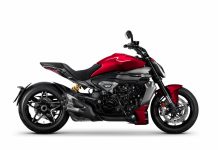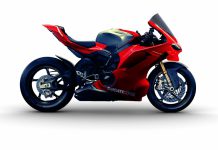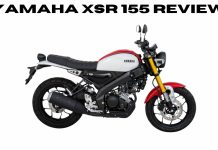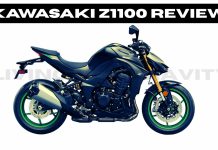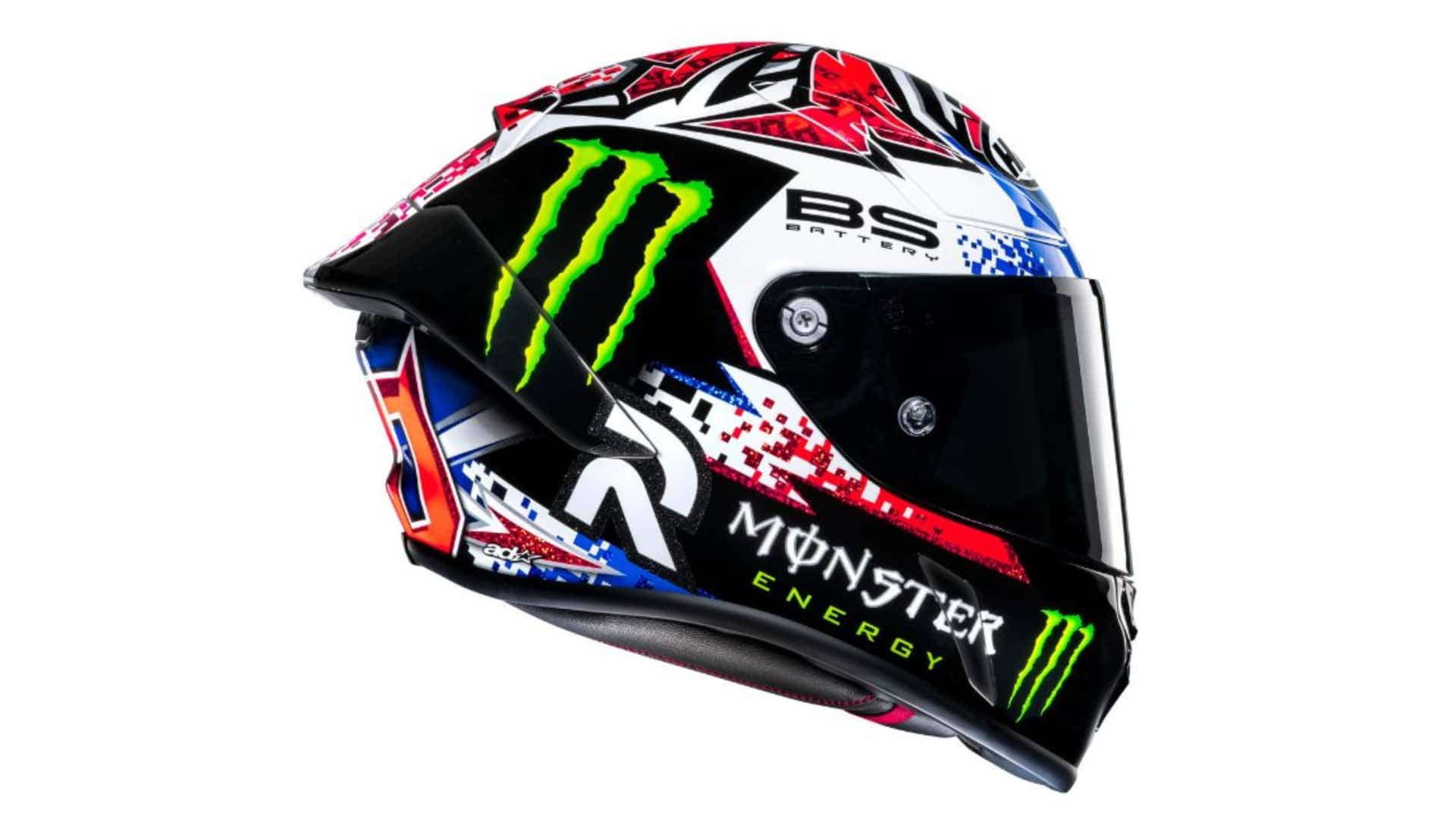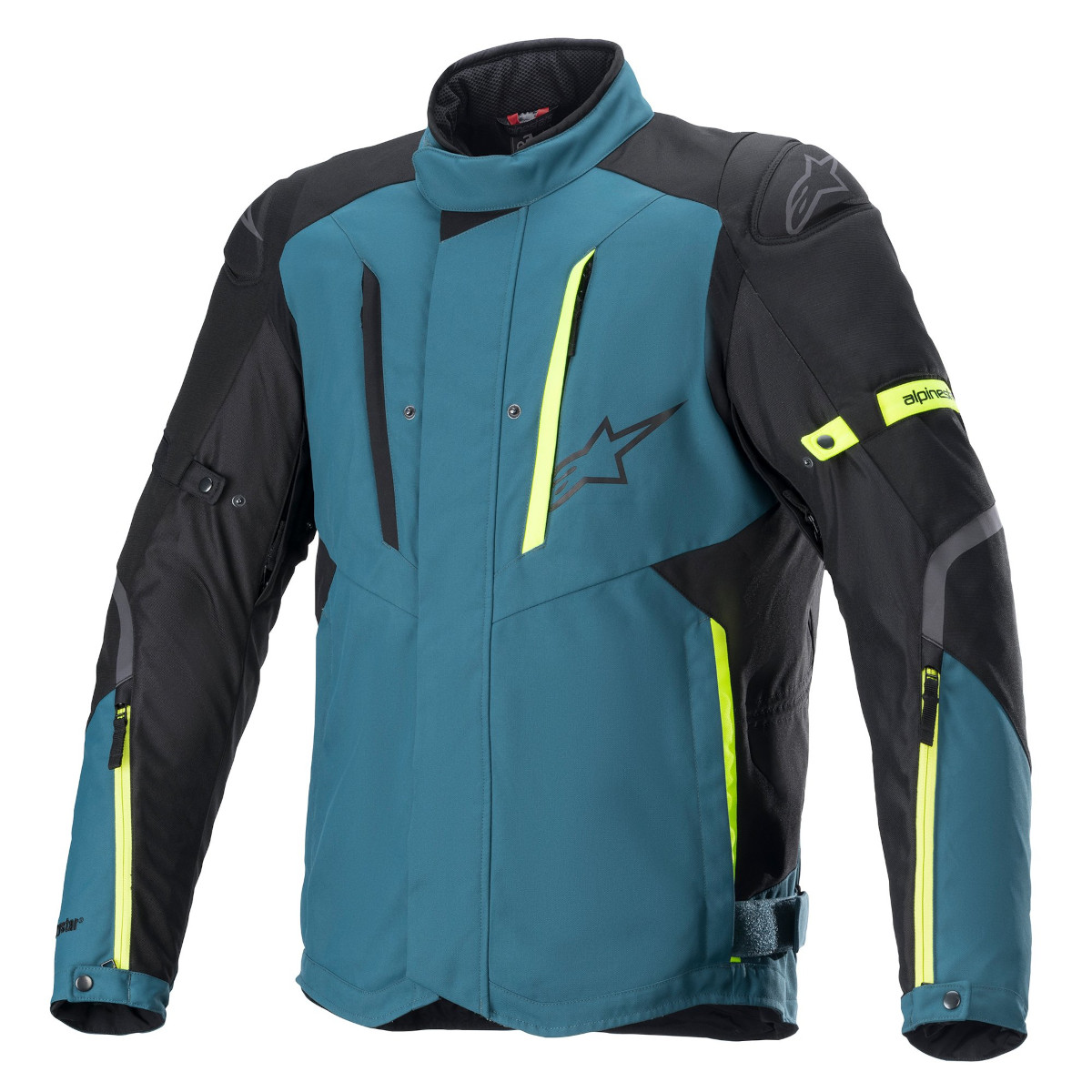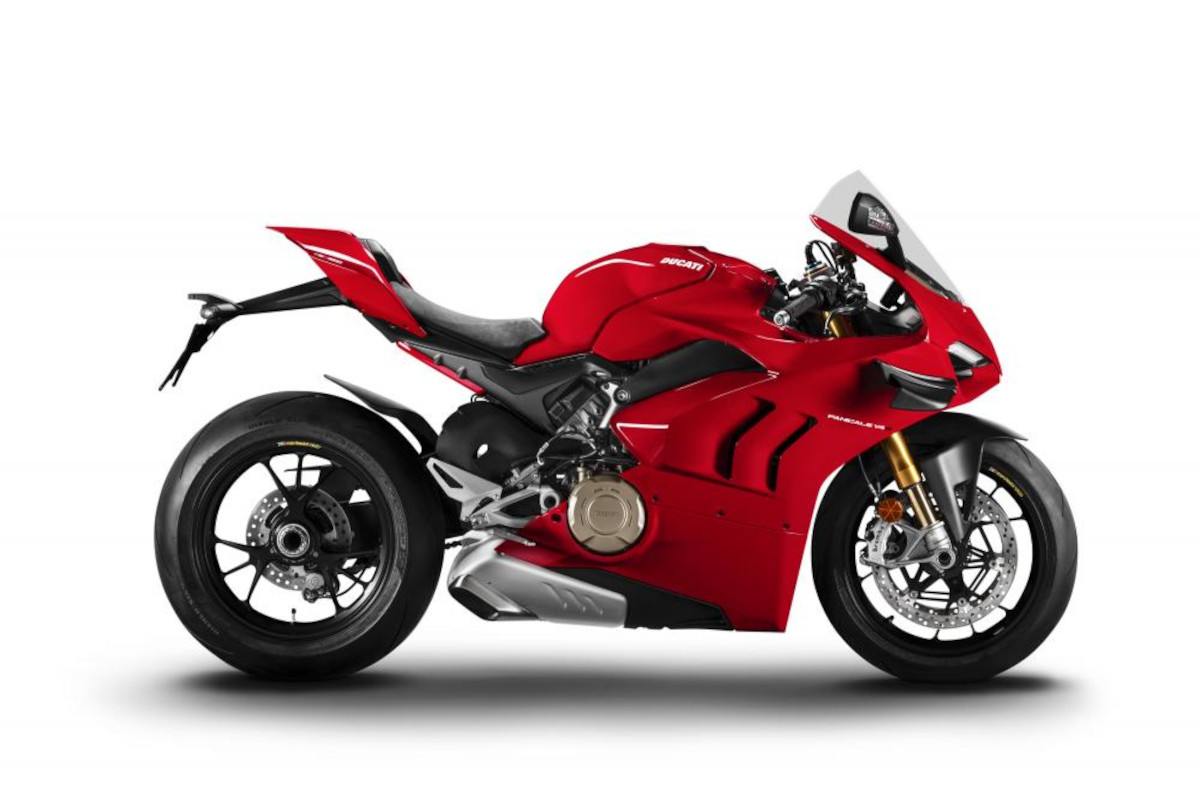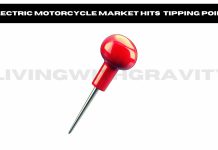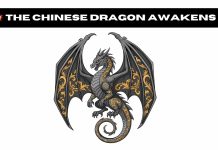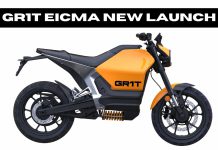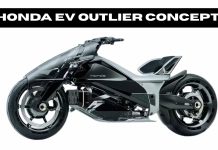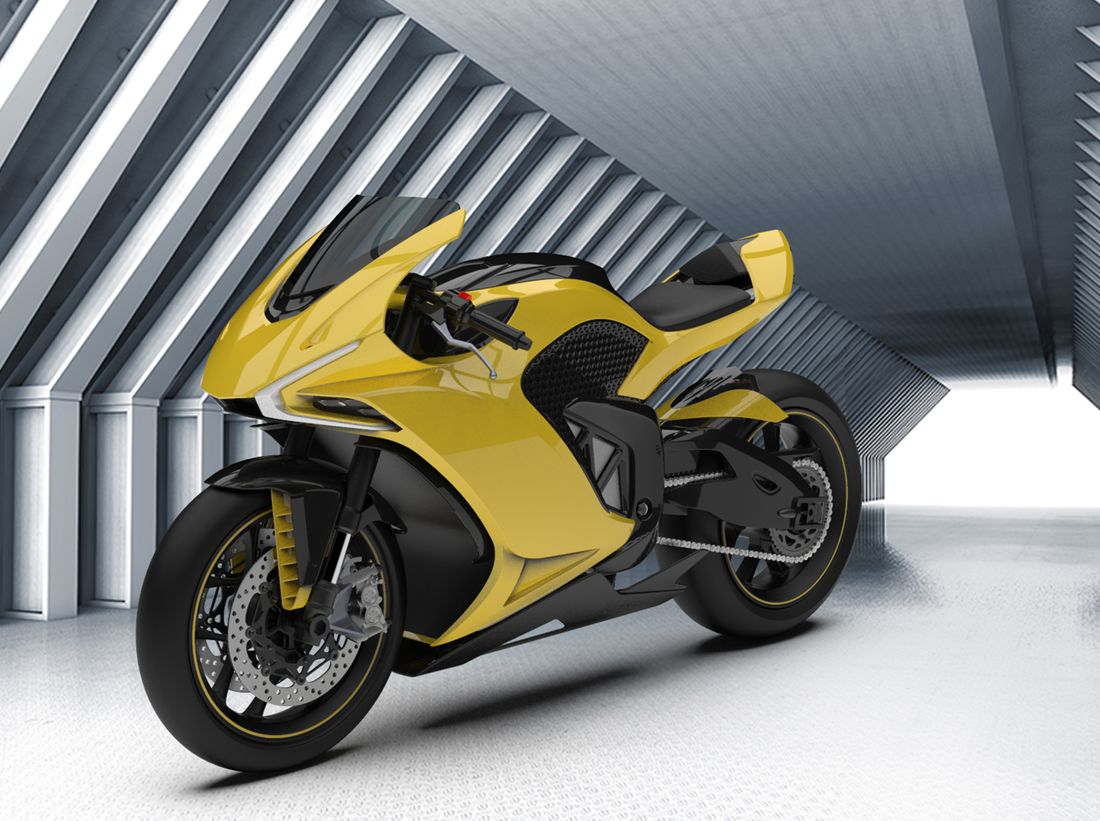1. Executive Summary
The Indian two-wheeler market demonstrated remarkable steadiness in June 2025, recording sales of over 13.2 lakh units. This performance underscores a stable demand environment within the sector, primarily driven by the enduring need for personal mobility across the country. Volume leadership was firmly held by practical and fuel-efficient motorcycles, particularly those in the 100cc-125cc range, with Hero MotoCorp’s Splendor and HF Deluxe driving significant sales. These models continue to resonate with a broad consumer base that prioritizes utility and cost-effectiveness in their purchasing decisions.
The scooter segment maintained its strong performance, especially among urban consumers, with Honda Activa retaining its dominant position. Scooters remain a preferred choice for city dwellers due to their convenience and ease of maneuverability in congested urban landscapes. Conversely, premium and electric offerings encountered notable resistance, with electric vehicle (EV) sales specifically impacted by ongoing subsidy cuts. This situation highlights the price sensitivity of these emerging segments and their vulnerability to policy shifts.
Key Highlights and Trends:
- Mass-Market Dominance: The enduring appeal of affordability, reliability, and fuel efficiency remains the primary driver for the majority of two-wheeler purchases, solidifying the foundational base of the market.
- Urban Mobility Preference: Scooters are the preferred choice for city commuters due to their convenience and ease of use, leading to sustained high sales volumes in metropolitan areas.
- Emerging Premium Niche: While facing overall resistance, the premium motorcycle segment shows gradual growth, particularly in the mid-capacity performance-commuter category and the established Royal Enfield segment. This indicates a nascent but growing aspirational market.
- EV Headwinds: The electric vehicle segment is experiencing a significant slowdown, largely attributed to policy changes like subsidy reductions. This suggests a temporary setback rather than a fundamental shift in long-term potential for electric mobility.
The overall market’s steadiness, despite challenges in specific segments, suggests a bifurcation in consumer spending power and priorities. Essential, cost-effective mobility, particularly in the 100-125cc motorcycle and urban scooter categories, demonstrates robust and consistent demand. In contrast, more discretionary or future-oriented purchases, such as premium motorcycles and electric vehicles, appear more sensitive to prevailing economic conditions or shifts in government policy.
The market’s stability is therefore a reflection of the strength of its foundational segments, rather than uniform health across all categories. Manufacturers heavily reliant on premium or EV segments may need to recalibrate short-term growth expectations and focus on cost efficiencies, value propositions, or alternative market penetration strategies. Conversely, mass-market players can continue to leverage their established strengths, while remaining mindful of broader economic factors influencing consumer budgets. This underscores the importance of a diversified portfolio to navigate market complexities effectively.
Table 1: Overall Indian Two-Wheeler Market Performance – June 2025
| Segment | Total Units Sold (Approx.) | Key Characteristics/Drivers |
| Overall Market | 1,320,000 | Steady demand, foundational personal mobility |
Note: Sales figures for segments are approximate estimations based on the provided top-selling models within each category, where precise segment totals were not explicitly stated in the source material.
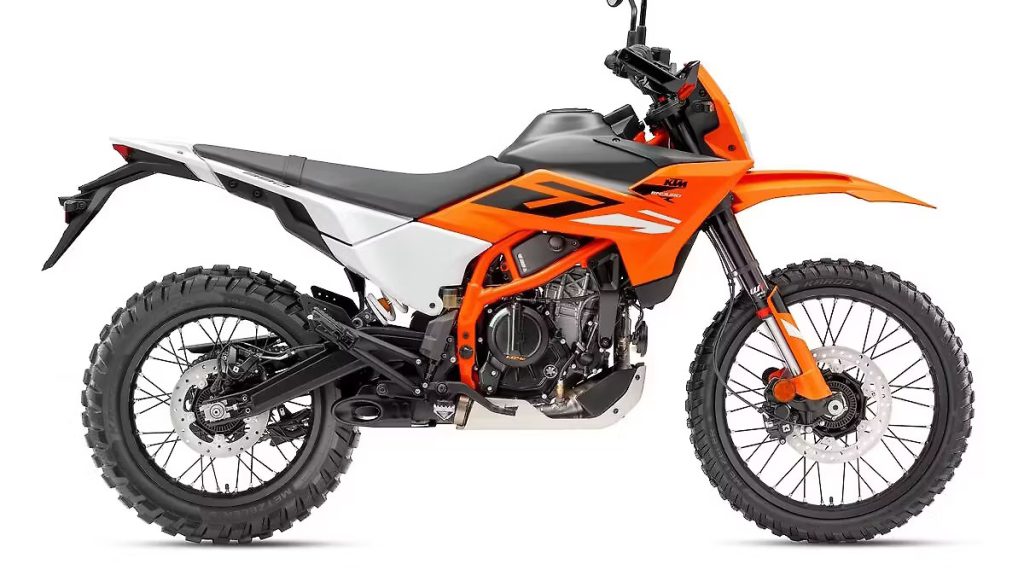
2. Overall Market Performance: June 2025 Snapshot
The Indian two-wheeler market recorded sales of over 13.2 lakh units in June 2025, indicating a steady performance compared to previous periods. This stability suggests a mature market with consistent underlying demand for personal mobility, driven by a large and growing population. The report from SIAM explicitly highlights that buyers prioritize practicality and fuel efficiency, particularly within the 100cc-125cc motorcycle range. This fundamental consumer preference forms the bedrock of the market’s significant volume. While scooters maintained their strong popularity among urban users, higher-capacity motorcycles also showed some movement, indicating a diversified demand across various segments, from utilitarian to aspirational.
The characterization of the overall market as “steady” with robust total sales initially suggests uniform market health. However, a closer examination reveals a more complex picture. The report notes that “premium and electric offerings still face resistance”, and specifically, electric vehicle sales are expected to “slow down for a while” due to subsidy cuts. For the aggregate market to remain “steady” despite significant headwinds in these particular segments, it logically follows that other segments must be performing exceptionally well or growing to compensate for the struggling ones.
This reveals a “two-speed market” dynamic: the mass-market motorcycle and scooter segments are the primary engines of volume and stability, while premium and EV segments, though important for future growth and market evolution, are currently facing challenges. The overall “steadiness” is thus a composite outcome, not a reflection of uniform segment performance. This suggests that a “steady” market isn’t necessarily a uniformly healthy one, nor does it imply growth across all categories. Manufacturers need to conduct deeper analyses to understand which specific segments are contributing to stability and which are struggling. This granular understanding is crucial for effective resource allocation, targeted product development, and differentiated marketing strategies, preventing misinterpretation of top-line figures.
The SIAM report clearly states that buyers “choose practical and fuel-efficient motorcycles in the 100cc-125cc range”. This preference is consistently reinforced by the reasons for Splendor’s demand: “reliable engine, good fuel efficiency figures, and affordable service costs”. In an economy, a pervasive and strong emphasis on “fuel efficiency” and “practicality,” which implies low running and maintenance costs, often signals that a significant portion of the consumer base is highly sensitive to the overall cost of ownership and disposable income levels. It suggests that economic prudence is a dominant factor in purchasing decisions for the majority of buyers.
This indicates that despite overall market steadiness, the underlying economic conditions for a large segment of consumers necessitate cost-conscious choices, rather than aspirational or discretionary spending. This reinforces the critical importance of continuous innovation in fuel economy and reduction of maintenance costs for mass-market offerings. Any significant increase in fuel prices or an economic downturn could disproportionately impact demand in this critical volume segment, highlighting a potential vulnerability. For manufacturers, this means that even as they explore premium and EV segments, the core value proposition of affordability and efficiency for the mass market cannot be overlooked.
Table 2: Indian Two-Wheeler Market Segment Performance – June 2025
| Segment | Total Units Sold (June 2025) | % Contribution to Total Market (Approx.) | Key Characteristics/Drivers |
| Mass-Market Motorcycles | |||
| Hero Splendor | 267,607 | 20.3% | Unrivaled leader, fuel-efficient, affordable |
| Hero HF Deluxe | 97,770 | 7.4% | Strong commuter, cost-effective |
| Honda CB Shine | 93,975 | 7.1% | Popular commuter, reliable |
| Bajaj Pulsar Range | 83,715 | 6.3% | Performance-oriented commuter |
| Other Hero (Glamour, Passion) | 70,784 | 5.4% | Diverse commuter options |
| TVS (Apache, Raider) | 62,678 | 4.7% | Growing presence, sporty commuters |
| Honda Unicorn | 26,588 | 2.0% | Japanese durability, reliable |
| Scooters | |||
| Honda Activa | 181,948 | 13.8% | Category leader, urban dominance |
| TVS Jupiter | 60,398 | 4.6% | Strong contender, value-for-money |
| Suzuki Access | 47,876 | 3.6% | Urban favorite, practical |
| Hero Xoom | 19,683 | 1.5% | Youth-focused, growing interest |
| TVS NTorq | 17,378 | 1.3% | Sporty, feature-rich |
| Yamaha Ray ZR | 12,875 | 1.0% | Urban, steady demand |
| Premium Motorcycles | |||
| Royal Enfield Classic 350 | 57,509 | 4.4% | Heritage, lifestyle, segment leader |
| Royal Enfield Meteor 350 | 7,681 | 0.6% | Cruiser, decent sales |
| Royal Enfield Hunter 350 | 7,510 | 0.6% | Retro, decent sales |
| Royal Enfield Himalayan 450 | 3,291 | 0.2% | Adventure, good sales |
| Hero Xtreme 160R | 8,128 | 0.6% | Performance at lower price |
| Hero XPulse 200 | 4,234 | 0.3% | Adventure, accessible performance |
| KTM 390 Series | ~1,000 | <0.1% | Niche performance, enthusiast |
| KTM 250cc Models | 1,210 | <0.1% | Niche performance |
| TVS Apache RR 310 / BMW G310 | Small numbers | <0.1% | High-end performance, niche |
| Electric Vehicles | Not in top charts | <0.1% | Facing resistance, subsidy cuts |
| Total Market | 1,320,000+ | 100% | Steady overall performance |
Note: % Contribution to Total Market is calculated based on the reported total sales of 13.2 lakh units. Some segment totals are derived from the sum of listed models, and therefore may not represent the entire segment’s sales if other models were not listed in the source material.
3. Dominance of the Mass-Market Motorcycle Segment
Hero MotoCorp continues its formidable leadership in the Indian two-wheeler market, primarily driven by the enduring popularity and sheer volume of its mass-market motorcycles. The Hero Splendor remains the undisputed top-selling two-wheeler in India, achieving an impressive 2,67,607 units sold in June. This significant lead underscores its deep market penetration and the immense trust it commands among consumers. Its sustained demand is directly attributed to a combination of highly valued attributes: a reliable engine, excellent fuel efficiency figures, and affordable service costs. These factors perfectly align with the broader consumer preference for practicality and cost-effectiveness observed across the market.
The Hero HF Deluxe followed the Splendor with 97,770 units, solidifying Hero’s dual dominance in the entry-level commuter segment. Together, Splendor and HF Deluxe represent a substantial portion of the overall market volume. Honda’s CB Shine came a close third with 93,975 units, demonstrating strong competition and consumer acceptance within the highly contested 100cc-125cc commuter space. Bajaj’s Pulsar range, while often perceived as performance-oriented, still achieved significant volume with 83,715 units sold, indicating its strong appeal as a performance-oriented commuter choice. This highlights a nuanced demand for a blend of utility and excitement. Other Hero models, Glamour (39,019 units) and Passion (31,765 units), also performed well, showcasing the breadth and depth of Hero’s mass-market portfolio and its ability to cater to slightly varied commuter preferences.
TVS showed notable gains too with its Apache (35,219 units) and Raider (27,459 units), indicating their growing presence and competitive performance in the commuter and slightly higher-capacity segments. Honda’s Unicorn, with 26,588 units sold, proved that there’s still strong demand for “Japanese durability”, suggesting a segment of buyers prioritizes long-term reliability and robust build quality, even if it comes at a slightly higher initial cost.
Hero Splendor’s position as the top-selling two-wheeler, coupled with the strong performance of Hero HF Deluxe and other Hero models like Glamour and Passion, points to a consistent, multi-model dominance by a single brand. This success, particularly in the highly competitive and price-sensitive mass-market segment, suggests that the brand’s strength extends beyond merely offering a “reliable engine, good fuel efficiency, and affordable service costs”, attributes often matched by competitors.
The sustained leadership indicates deeply entrenched brand loyalty, built over decades, and an unparalleled distribution and service network, especially in rural and semi-urban areas where these bikes are immensely popular. These factors create significant, almost insurmountable, barriers for competitors attempting to challenge Hero’s stronghold in this volume segment. It represents an ecosystem advantage. For competitors aiming to gain significant market share in the mass-market segment, simply matching product features or pricing may not be sufficient. Dislodging Hero’s leadership requires a long-term, capital-intensive strategy focused on building comparable brand trust, expanding reach into underserved geographies, and establishing a robust, widespread after-sales service infrastructure. This highlights that market dominance in India’s mass market is a function of both product excellence and an extensive, reliable ecosystem.
Furthermore, the significant sales of the Bajaj Pulsar range, noted as a “go-to choice for riders looking for performance”, alongside the gains shown by TVS Apache and Raider, indicate a subtle but growing trend. While these models are not among the absolute top sellers, their substantial sales within the broader mass-market context suggest a developing sub-segment of buyers. These consumers are not solely seeking basic utility; they desire a blend of daily practicality with a more engaging ride, better aesthetics, or a perceived “performance” edge, even at relatively lower price points compared to true premium bikes.
This suggests an evolution in consumer aspirations within the mass market, where “performance” is becoming an increasingly important differentiator. Manufacturers should not view the mass market as a monolithic entity driven solely by utilitarian needs. There is a clear opportunity to capture market share by offering differentiated products that cater to these nascent aspirations for style, power, and a more engaging riding experience, without compromising on core commuter attributes like fuel efficiency and affordability. This trend could also serve as a crucial stepping stone, allowing brands to introduce buyers to their more premium performance offerings as their disposable income or aspirational needs grow.
Table 3: Top-Selling Mass-Market Motorcycles – June 2025
| Model Name | Manufacturer | Units Sold | Engine Capacity | Key Contributing Factors |
| Hero Splendor | Hero MotoCorp | 267,607 | 100-125cc | Reliability, Fuel Efficiency, Affordable Service |
| Hero HF Deluxe | Hero MotoCorp | 97,770 | 100cc | Affordability, Practicality, Low Maintenance |
| Honda CB Shine | Honda | 93,975 | 125cc | Reliability, Commuter Focus, Brand Trust |
| Bajaj Pulsar Range | Bajaj Auto | 83,715 | 125cc-220cc (various) | Performance, Sporty Design, Value for Money |
| Hero Glamour | Hero MotoCorp | 39,019 | 125cc | Style, Fuel Efficiency, Commuter Comfort |
| TVS Apache | TVS Motor Co. | 35,219 | 160cc-200cc (various) | Sporty Performance, Features, Design |
| Hero Passion | Hero MotoCorp | 31,765 | 100-110cc | Style, Fuel Efficiency, Commuter Appeal |
| TVS Raider | TVS Motor Co. | 27,459 | 125cc | Sporty Commuter, Features, Youth Appeal |
| Honda Unicorn | Honda | 26,588 | 160cc | Durability, Reliability, Smooth Ride |
4. Scooter Segment: Urban Popularity and Key Players
Scooters continue to “Rule in Cities”, firmly establishing their role as the preferred mode of urban transport due to their ease of use, convenience, and compact size suitable for congested environments. The Honda Activa remains the undisputed leader in the scooter segment, selling an impressive 1,81,948 units in June. Its consistent dominance highlights its unparalleled brand strength, perceived reliability, and broad appeal across diverse urban demographics.
The TVS Jupiter secured the second spot with 60,398 units, followed by the Suzuki Access at 47,876 units, indicating a competitive but consolidated top tier behind the Activa. These models offer strong alternatives, often competing on features, design, and value. The Hero Xoom, with 19,683 units, is showing “growing interest from younger buyers”. This suggests a successful targeting of a specific demographic with its modern design, features, and marketing, indicating a shift in youth preferences. The TVS NTorq (17,378 units) and Yamaha Ray ZR (12,875 units) also maintained “steady demand among urban buyers”. These models are known for their sportier aesthetics and advanced features, such as Bluetooth connectivity, further reinforcing the segment’s popularity and the presence of models catering to specific urban consumer preferences beyond basic utility.
Honda Activa’s lead with 1,81,948 units sold, which is nearly three times the sales of its closest competitor, TVS Jupiter, is a significant observation. This massive and sustained lead suggests that the Activa is not merely a market leader but a category-defining product. Over years, “Activa” has become almost synonymous with “scooter” for many Indian consumers, benefiting from unparalleled brand recall, perceived reliability, widespread service availability, and a reputation for hassle-free ownership. This deep entrenchment in the consumer mind and market infrastructure creates an extremely formidable barrier for new entrants or existing competitors attempting to significantly dent its market share through direct competition.
It signifies a brand that has achieved near-generic status within its product category. For competitors, a direct frontal assault on Activa’s core segment is likely to be highly challenging and resource-intensive with limited returns. A more viable strategy might be to focus on specific sub-segments within scooters, such as performance, retro, youth-focused, electric, or specific feature sets, where Activa’s dominance is less absolute. Innovation in niche areas, differentiated value propositions, and catering to evolving urban lifestyles can offer pathways to growth without directly confronting the category king.
While Activa and Jupiter cater to a broad base, the success of models like Hero Xoom, which has “growing interest from younger buyers”, and the steady demand for TVS NTorq and Yamaha Ray ZR among “urban buyers” is notable. These models are recognized for their sportier designs and advanced features. This indicates that urban consumers are not homogenous in their scooter preferences. They are increasingly segmenting themselves based on age, aesthetic preferences, and a desire for specific features, moving beyond a purely functional purchase. Beyond basic utility, urban buyers are evolving to look for scooters that reflect their personal style, offer enhanced features, and cater to specific lifestyle needs.
Manufacturers should invest in deeper market research to understand these evolving urban consumer segments. Developing a diverse scooter portfolio that caters to different age groups, aesthetic preferences, and feature demands can unlock new growth avenues and reduce over-reliance on the mass-market utility segment. This also opens opportunities for premiumization within the scooter category, allowing brands to command higher price points for differentiated offerings that resonate with specific lifestyle choices.
Table 4: Top-Selling Scooters – June 2025
| Model Name | Manufacturer | Units Sold | Key Target Demographic/Key Selling Point |
| Honda Activa | Honda | 181,948 | Mass Appeal, Reliability, Urban Commute |
| TVS Jupiter | TVS Motor Co. | 60,398 | Value-for-Money, Family-Oriented, Practical |
| Suzuki Access | Suzuki | 47,876 | Urban Favorite, Refined Engine, Practical |
| Hero Xoom | Hero MotoCorp | 19,683 | Youth-focused, Modern Design, Features |
| TVS NTorq | TVS Motor Co. | 17,378 | Sporty, Performance, Advanced Features |
| Yamaha Ray ZR | Yamaha | 12,875 | Urban Style, Connectivity, Youthful |
5. Premium and Performance Motorcycle Segment: Emerging Trends
The premium motorcycle segment is witnessing “gradual growth” and “some movement”, indicating a slow but steady shift in consumer preferences towards higher-capacity and performance-oriented machines. This suggests a growing, albeit niche, market for aspirational products. Crucially, the data suggests that “buyers are now open to more performance-focused machines at lower price points”, pointing to a sweet spot where performance meets affordability, acting as a bridge from the mass market.
The Bajaj Pulsar continues its strong performance, being a popular choice in the 150cc-160cc segment for “performance-based commuters”. Its significant sales of 83,715 units underscore its dual role across mass-market and entry-premium segments, appealing to those seeking an upgrade. The TVS Apache series (160cc to 200cc) is also “doing well”, further reinforcing the demand for sporty yet practical motorcycles in this mid-capacity range. These bikes offer a blend of daily usability with an engaging ride. Hero’s calculated foray into this segment with the Xtreme 160R (8,128 units) and XPulse 200 (4,234 units) shows promising signs, aligning perfectly with the trend of buyers being open to performance at “lower price points.” This indicates a strategic move by Hero to capture upgraders.
Royal Enfield continues its remarkable success, with the Classic 350 selling an impressive 57,509 units, “far ahead of other bikes in its category”. This highlights the brand’s unique positioning, strong emotional connection with its buyers, and its ability to transcend traditional performance metrics. Other 350cc models like the Meteor 350 (7,681 units) and Hunter 350 (7,510 units) also witnessed “decent sales”, indicating the breadth of appeal within RE’s 350cc platform and its successful diversification within its core segment. The Himalayan 450 adventure bike sold a “good 3,291 units”, showcasing a growing, albeit niche, interest in adventure touring segments, even at higher price points, driven by lifestyle aspirations.
In the more specialized niche and high-end segments, KTM’s 390 series sold just over 1,000 units, and its 250cc models sold 1,210 units. These numbers, while small in absolute terms, are “as expected in this segment,” reflecting the highly specialized, enthusiast-driven nature, and premium pricing of these performance bikes. Similarly, the TVS Apache RR 310 and BMW G310 range sold in “smaller numbers”, reinforcing the limited but dedicated market for high-performance, premium entry-level superbikes, which cater to a very specific, discerning clientele.
The strong performance of Bajaj Pulsar and TVS Apache in the 150-200cc segment, explicitly positioned as “performance-based commuters,” along with Hero’s Xtreme 160R and XPulse 200 sales, which indicate that buyers are “open to more performance-focused machines at lower price points”, points to a significant trend. This collective performance suggests a growing, distinct segment of consumers who are looking to upgrade from basic 100-125cc commuters but are not yet willing or able to afford the significantly higher price points of true high-end premium motorcycles. They seek a balance of enhanced performance, sportier styling, and aspirational value within an accessible budget.
This “affordable performance” segment acts as a crucial bridge in the market, allowing manufacturers to introduce consumers to higher-capacity engines and more advanced features, potentially fostering future upgrades to even more premium offerings as disposable incomes rise and aspirations evolve. This segment represents a significant and actionable growth opportunity for manufacturers. By carefully balancing performance attributes, desirable features, and competitive pricing, brands can effectively tap into the aspirations of a large consumer base looking for a meaningful upgrade from basic commuters without a prohibitive cost jump. This also enables brands to build a product “ladder,” guiding consumers from entry-level to more premium offerings over time, ensuring long-term customer retention and value capture.
A notable observation is the overwhelming sales volume of the Royal Enfield Classic 350 (57,509 units), which is “far ahead of other bikes in its category,” and the decent performance of other RE 350cc models. This stands in stark contrast to the significantly smaller sales numbers of objectively higher-performance bikes like the KTM 390/250 series (around 1,000-1,200 units) and the BMW G310/Apache RR 310. This disparity in sales volume, despite KTM/BMW being technically superior in terms of raw performance metrics, indicates that Royal Enfield’s success is not primarily driven by traditional performance attributes. Instead, it is fueled by an intangible “experience” – a blend of heritage, distinctive retro styling, the characteristic “thump” of its engine, and a strong sense of community and lifestyle that resonates deeply with a much larger audience.
Royal Enfield effectively sells an emotion and a brand identity, which appeals to a broader consumer base than the pure performance segment. For other manufacturers entering or competing in the premium segment, simply offering higher performance, advanced technology, or aggressive styling may not be sufficient to challenge Royal Enfield’s stronghold. Success in this segment requires understanding and cultivating a compelling brand narrative, fostering a loyal community, and delivering a unique emotional and experiential value proposition. This also suggests that the “premium” market in India is highly fragmented by consumer motivation: some seek raw performance, others seek heritage/lifestyle, and others seek luxury or specific niche capabilities, necessitating highly targeted strategies.
Table 5: Key Premium and Performance Motorcycle Sales – June 2025
| Model Name | Manufacturer | Units Sold | Engine Capacity | Segment Positioning |
| Royal Enfield Classic 350 | Royal Enfield | 57,509 | 350cc | Retro Classic, Lifestyle, Heritage |
| Bajaj Pulsar Range | Bajaj Auto | 83,715 | 125cc-220cc (various) | Performance Commuter, Sporty Upgrade |
| Royal Enfield Meteor 350 | Royal Enfield | 7,681 | 350cc | Cruiser, Modern Classic |
| Royal Enfield Hunter 350 | Royal Enfield | 7,510 | 350cc | Urban Retro, Accessible Royal Enfield |
| Hero Xtreme 160R | Hero MotoCorp | 8,128 | 160cc | Performance Commuter, Accessible Sporty |
| Royal Enfield Himalayan 450 | Royal Enfield | 3,291 | 450cc | Adventure Touring, Niche Lifestyle |
| Hero XPulse 200 | Hero MotoCorp | 4,234 | 200cc | Adventure, Accessible Off-road |
| KTM 250cc Models | KTM | 1,210 | 250cc | Niche Performance, Entry Sport |
| KTM 390 Series | KTM | ~1,000 | 390cc | Niche Performance, High-End Sport |
| TVS Apache RR 310 / BMW G310 | TVS / BMW | Small numbers | 310cc | High-End Performance, Premium Niche |
6. Electric Vehicle Segment: Current Challenges and Future Outlook
The electric vehicle (EV) segment for two-wheelers faced significant headwinds in June 2025. Electric scooter sales were not high enough to feature in the top charts. This indicates a concerning drop in sales volume compared to previous periods or ambitious growth projections, suggesting a substantial market contraction. The primary reason cited for this sharp slowdown is the “ongoing subsidy cuts”. This establishes a direct causal link between policy changes and market performance, highlighting the segment’s high sensitivity to government incentives and its reliance on financial support for adoption.
Despite the current downturn, the prognosis suggests that EV sales “may slow down for a while before picking up again”. This implies that the current resistance is largely perceived as a temporary phase, likely due to market adjustment to new pricing structures post-subsidy, rather than a permanent rejection of EV technology or a fundamental flaw in the product itself. It points to an expectation of future recovery once the market stabilizes and adapts.
The fact that EV sales are low and directly linked to subsidy cuts means the market is not yet self-sustaining on price. The immediate and drastic impact of the removal of financial incentives on sales volume strongly indicates that the Indian EV two-wheeler market is still highly nascent and critically dependent on government policy support. It has not yet reached a level of maturity where product-market fit, robust charging infrastructure, or the total cost of ownership (TCO) alone are compelling enough to drive mass adoption without significant upfront financial incentives. Consumers are clearly highly price-sensitive, and the current unsubsidized prices are not yet perceived as offering sufficient value to trigger widespread demand, especially given range anxiety and nascent infrastructure.
For EV manufacturers, the strategic focus must shift from rapid volume growth, often artificially inflated by subsidies, to building a more sustainable and resilient value proposition. This means prioritizing aggressive cost reduction through localization of components, continuous improvement in battery technology and real-world range, rapid expansion of reliable charging infrastructure, and comprehensive consumer education on the long-term TCO benefits to overcome the initial price hurdle. It also suggests a need for diversified revenue streams beyond just vehicle sales, such as battery-as-a-service models or integrated mobility solutions.
The current slowdown in EV sales due to subsidy cuts, coupled with the expectation that sales “may slow down for a while before picking up again”, aligns with a common pattern observed in the adoption cycle of emerging technologies. This pattern of initial enthusiasm, often subsidy-driven, followed by a sharp decline when practical challenges become apparent, and then a gradual recovery, is characteristic of a “Trough of Disillusionment.” In this phase, the initial hype dissipates as practical challenges like policy volatility, infrastructure gaps, and high upfront costs become evident. The anticipation of “picking up again” suggests a future “Slope of Enlightenment” as the market matures, technological solutions improve, and the value proposition becomes clearer and more compelling.
This current period of slowdown is critical for EV players. It is not a time for despair, but rather for consolidation, strategic innovation, and building fundamental market drivers, such as robust, reliable products, widespread and accessible charging, and genuinely competitive TCO, rather than chasing unsustainable volume. Companies that can weather this period by continuing to invest in core technology, infrastructure, and consumer trust will be better positioned for the eventual rebound and long-term leadership in the electric mobility space. It also serves as a cautionary tale against overly optimistic short-term projections for EV adoption based solely on initial subsidized growth.
Table 6: Electric Two-Wheeler Market Status – June 2025
| Metric/Factor | Status in June 2025 | Future Outlook / Key Drivers for Growth |
| Sales Volume | Not high enough to appear in top charts | Expected to pick up again after a slowdown |
| Primary Challenge | Ongoing subsidy cuts | Market adjustment to new pricing structures |
| Market Maturity | Highly nascent, dependent on policy support | Needs to mature beyond incentive-driven adoption |
| Consumer Perception | Price-sensitive, perceived high upfront cost | Need for compelling TCO, improved value proposition |
| Infrastructure | Implicitly challenged due to low sales | Rapid expansion of reliable charging/swapping networks |
| Technology | Continuous improvement needed in battery tech, range | Innovation in battery density, charging speed, vehicle performance |
| Industry Strategy | Shift from volume chasing to sustainable value building | Cost reduction, localization, consumer education |
7. Key Market Drivers and Consumer Preferences
The Indian two-wheeler market is shaped by a diverse set of drivers and consumer preferences, which vary significantly across segments.
Dominant Drivers for Mass Market:
- Practicality and Fuel Efficiency: The overarching consumer preference for “practical and fuel-efficient motorcycles in the 100cc-125cc range” is the single most significant volume driver. This is vividly exemplified by the Hero Splendor, whose demand is directly linked to its “reliable engine, good fuel efficiency figures, and affordable service costs”. This segment caters to the fundamental need for economical daily commute.
- Affordability: The overwhelming success of models like Splendor and HF Deluxe underscores the critical role of accessible pricing, both for initial purchase and long-term maintenance, for the vast majority of Indian consumers.
- Reliability/Durability: Honda’s Unicorn sales proving “strong demand for Japanese durability” highlights that a significant segment of buyers prioritizes long-term, trouble-free ownership and robust build quality, even if it comes with a slightly higher initial investment.
Urban Scooter Preferences:
- Convenience and Ease of Use: Scooters “Rule in Cities” and are “popular among urban users”, primarily due to their gearless operation, ease of maneuverability in congested traffic, and practical under-seat storage, making them ideal for urban commuting.
- Style and Youth Appeal: The “growing interest from younger buyers” for Hero Xoom and steady demand for TVS NTorq and Yamaha Ray ZR among “urban buyers” suggests an evolving demand beyond pure utility. These models cater to aesthetic appeal, modern features, and a desire for personal expression among a younger, more style-conscious demographic.
Premium Segment Nuances:
- Aspirational Performance (Accessible): The strong performance of Bajaj Pulsar and TVS Apache in the 150-200cc range, along with the promising sales of Hero Xtreme 160R and XPulse 200, indicates a growing demand for performance and sportier aesthetics at a “lower price point.” This segment represents a crucial bridge for upgraders from basic commuters.
- Brand Heritage and Lifestyle: Royal Enfield’s overwhelming success, particularly the Classic 350, is driven less by raw performance and more by its unique brand identity, rich heritage, distinctive styling, and the aspirational lifestyle it embodies. This appeals to a segment seeking a sense of legacy and community.
- Niche Performance: The sales of KTM and BMW G310/Apache RR 310 cater to a very specific, enthusiast-driven market that prioritizes high-end performance, cutting-edge technology, and track-oriented capabilities, often irrespective of volume or broad market appeal.
Segments Facing Resistance:
- High-End Premium: While showing “some movement,” the overall premium segment “still face resistance”. This is particularly evident in the low sales volumes of very high-capacity or niche performance bikes (KTM, BMW, TVS RR 310) which sell in “smaller numbers”. This resistance is likely due to their significantly higher price points, limited disposable income for such discretionary purchases among the broader population, and a smaller, highly specialized target audience.
- Electric Vehicles: EV offerings “still face resistance” and their sales “weren’t high enough to appear in the top charts”. The primary and direct reason is “ongoing subsidy cuts”, which directly impacted their affordability and perceived value proposition in the short term, pushing them beyond the comfort zone of price-sensitive consumers.
The data clearly illustrates that mass-market 100-125cc bikes, such as the Splendor and HF Deluxe, dominate sales volume, driven by practicality and affordability. This forms the broad, foundational base of the market. Mid-capacity performance commuters like Pulsar, Apache, and Xtreme demonstrate “gradual growth” and appeal to buyers “open to more performance-focused machines at lower price points”. This represents a growing, aspirational mid-tier. High-end premium bikes from KTM and BMW sell in “smaller numbers”, catering to a very specific, niche segment of enthusiasts. This forms the narrow apex of the market structure. This hierarchical sales structure indicates that the Indian market is fundamentally highly price-sensitive and value-driven at its core, with a growing but still limited capacity for higher-priced, specialized products.
Consumer purchasing power and willingness to pay for premium features diminish significantly as one moves up the price ladder. Manufacturers must strategically align their product portfolio development and pricing strategies with this observed “value pyramid.” Over-investing disproportionately in the apex without a strong, well-defined base or a robust mid-tier bridge can lead to limited returns and market penetration challenges. Growth strategies should therefore focus on either deepening penetration at the broad base, effectively expanding the aspirational mid-tier, or carefully cultivating niche segments with highly targeted marketing and distribution. This framework assists in understanding market potential and allocating resources efficiently.
Furthermore, the report states that “Premium and electric offerings still face resistance”. Yet, the Royal Enfield Classic 350 sells an impressive 57,509 units, a volume vastly superior to high-performance bikes like KTMs (around 1,000 units) or BMW G310/Apache RR 310. This apparent contradiction highlights that “premium” in the Indian two-wheeler market is not solely defined by traditional metrics such as engine capacity, raw performance, or cutting-edge technological sophistication, where KTM and BMW excel. Instead, it encompasses a broader, more nuanced set of values. For a significant segment of Indian consumers, “premium” also includes brand heritage, distinctive styling, emotional connection, perceived status, and a unique lifestyle proposition, where Royal Enfield dominates.
The resistance faced by some premium offerings might be due to a mismatch between their “premium” attributes, such as high performance and advanced tech, and what the larger Indian consumer base currently values as “premium” and is genuinely willing to pay for. Manufacturers aiming for success in India’s premium segment need to understand these multi-faceted definitions. A “premium” offering might need to be less about absolute performance and more about delivering a unique brand experience, aspirational design, or specific lifestyle appeal at a price point that resonates with a larger segment of upgraders. This also suggests that the “premium” market is not a single homogenous segment but comprises several distinct sub-segments with different motivations and purchasing drivers, requiring tailored product and marketing approaches.
8. Challenges and Opportunities
The Indian two-wheeler market, while demonstrating overall steadiness, presents distinct challenges and opportunities across its diverse segments.
Challenges:
- Price Sensitivity in Premium Segment: Despite showing gradual growth, premium motorcycles, especially at the higher end, continue to face resistance. This is particularly evident in the low sales volumes of high-end performance bikes from KTM, BMW, and TVS RR 310. The core challenge lies in convincing a large enough consumer base to justify the significant price premium over highly competitive mass-market options, given prevailing income levels.
- EV Market Volatility and Policy Dependence: The electric vehicle segment is highly susceptible to abrupt policy changes, as starkly demonstrated by the direct and immediate impact of “subsidy cuts” on sales. This creates significant market uncertainty for manufacturers, requiring them to constantly adapt to evolving regulatory landscapes and consumer price expectations, making long-term planning difficult.
- Infrastructure Gaps for EVs: While not explicitly detailed in the provided information, the low EV sales and the expectation of a “slow down for a while” implicitly point to underlying infrastructure challenges, such as insufficient public charging stations, limited service networks, and battery swapping limitations. These become more pronounced and critical when direct financial incentives are removed, hindering widespread adoption.
- Intense Competition in Mass Market: While dominant, the mass-market segment is characterized by fierce competition, with established players like Hero, Honda, Bajaj, and TVS all vying for market share. Sustaining leadership and profitability in this segment requires continuous innovation in fuel efficiency, cost-effectiveness, and maintaining extensive distribution and service networks.
Opportunities:
- Expanding the “Affordable Performance” Niche: The consistent success of Bajaj Pulsar, TVS Apache, and the promising entry of Hero Xtreme/XPulse indicates a clear and growing opportunity to cater to buyers seeking more engaging rides and sportier aesthetics without a significant price jump into true premium territory. This segment can act as a natural and accessible upgrade path from 100-125cc commuters.
- Deepening Urban Scooter Segmentation: The diverse appeal of Honda Activa (mass market), Hero Xoom (youth-focused), and TVS NTorq/Yamaha Ray ZR (sporty/feature-rich) demonstrates significant potential for further segmenting the urban scooter market. Manufacturers can develop highly specialized offerings that cater to specific lifestyle needs, feature preferences, and demographic groups within urban environments.
- Leveraging Brand Heritage and Lifestyle: Royal Enfield’s continued overwhelming success underscores the immense value of brand heritage and the ability to sell a lifestyle and emotional experience rather than just a vehicle. Other manufacturers could explore similar strategies to build deeper emotional connections with consumers, fostering loyalty beyond functional attributes.
- Long-Term EV Potential: Despite current setbacks, the long-term outlook for EVs is still positive, with an expectation of “picking up again”. The current slowdown presents a crucial opportunity for manufacturers to refine products, build robust and accessible charging infrastructure, and focus on fundamental value propositions, such as lower running costs and environmental benefits, to strategically prepare for the inevitable rebound and capitalize on future growth.
- Rural Market Penetration and Tailored Offerings: While not explicitly detailed, the dominance of 100-125cc bikes often implies strong rural and semi-urban demand. Significant opportunities exist for manufacturers to further penetrate these markets through tailored products, such as rugged, high ground clearance models, flexible financing options, and expanded last-mile service networks.
The low EV sales, directly linked to subsidy cuts, highlight that the market is not yet self-sustaining on price. For EVs to “pick up again” without subsidies, they need to offer a compelling value proposition, which includes not just competitive pricing and better range, but crucially, a robust and ubiquitous charging infrastructure. However, private investment in charging infrastructure is often hesitant without a critical mass of EV adoption. This creates a “chicken and egg” dilemma: consumers are reluctant to buy EVs without sufficient charging infrastructure, and infrastructure providers are hesitant to invest without a large enough EV fleet.
The current slowdown is thus a critical period for EV players to break this cycle. It necessitates a concerted effort from manufacturers, charging infrastructure providers, and policymakers to align on standards, accelerate deployment, and educate consumers. Companies that can effectively address the infrastructure gap during this period of market adjustment will be better positioned to capitalize on the eventual resurgence of EV demand, transforming a current challenge into a foundational competitive advantage.
Conclusions
The Indian two-wheeler market in June 2025 demonstrates a resilient yet bifurcated landscape. While overall sales remained steady at over 13.2 lakh units, this stability is predominantly driven by the robust performance of the mass-market 100-125cc motorcycles and urban scooters, which cater to the fundamental consumer demand for practical, fuel-efficient, and affordable personal mobility. Hero MotoCorp, particularly with its Splendor and HF Deluxe, continues to leverage its deep brand loyalty and extensive distribution network to maintain an unrivaled lead in the mass-market motorcycle segment. Similarly, Honda Activa’s near-generic status underscores its enduring dominance in the urban scooter market.
A significant trend emerging is the growth of an “affordable performance” segment, exemplified by the Bajaj Pulsar and TVS Apache series, and Hero’s Xtreme/XPulse models. This indicates a growing consumer aspiration for enhanced riding experiences and sportier aesthetics at accessible price points, serving as a crucial bridge for upgraders from basic commuters. Within the premium segment, Royal Enfield stands out, not merely on performance metrics, but by successfully cultivating a unique brand heritage and lifestyle experience that resonates deeply with a large and loyal customer base, differentiating it from high-performance niche players like KTM and BMW.
Conversely, premium offerings at the higher end and the electric vehicle segment continue to face notable resistance. The sharp decline in EV sales, directly attributed to subsidy cuts, highlights the nascent stage of this market and its critical dependence on policy support and a yet-to-be-fully-developed charging infrastructure. This period represents a “Trough of Disillusionment” for EVs, demanding strategic investment in cost reduction, technological advancement, and infrastructure build-out to ensure long-term, sustainable growth.
In essence, the Indian two-wheeler market operates on a “value pyramid,” with high-volume, price-sensitive utility at its base, a growing aspirational mid-tier, and specialized, smaller volume niches at its apex. Success for manufacturers hinges on understanding these distinct consumer motivations and tailoring product portfolios, pricing strategies, and distribution networks accordingly. The market’s stability is a testament to the strength of its foundational segments, while the challenges in premium and EV categories underscore the need for strategic adaptation and long-term vision to unlock future growth potential.
Our Social Media Handles
- Instagram : LivingWithGravity
- Medium : Akash Dolas
- YouTube Channel : Gear and Shutter


